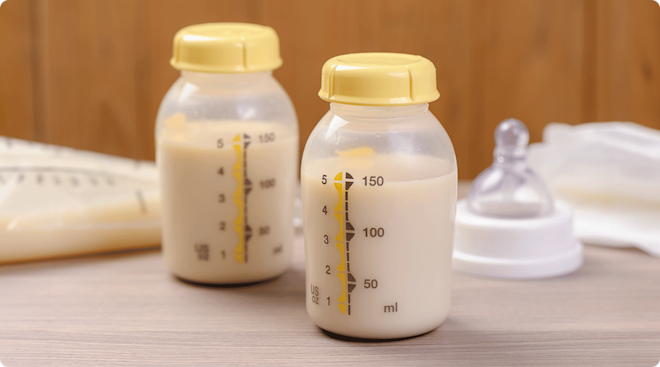7 Safer, More Sustainable Sunscreens for Kids - Consumer Reports
When it comes to sunscreen, one thing is straightforward: Sun protection is absolutely crucial for everyone, including children, to reduce the likelihood of skin cancer.
But choosing a sunscreen can be complicated, especially one for kids. Parents are understandably anxious about which UV-protecting ingredients to choose and how to apply sunscreen to wiggly, active children. Add in growing concerns about the environmental impact of some sunscreens, regional bans of coral reef-harming ingredients, and calls for additional research on some sunscreen ingredients, and finding a safe, effective, nontoxic children’s sunscreen seems trickier than ever.
In this article
Every year, CR independently tests dozens of sunscreens for UV protection. To bring you the most sustainable and effective sunscreen picks for kids, plus tips for keeping them safe in the sun, we interviewed pediatric dermatology experts and partnered with Made Safe and Made Wise, programs that educate consumers about product safety and sustainability.
Skin cancer, the most common cancer in the U.S., will affect about 1 in 5 Americans in their lifetime. And when it comes to skin cancer, childhood sun exposure matters.
Sunscreens use either chemical or mineral-based active ingredients to protect our skin from UVB rays (associated with sunburn) and UVA rays (associated with skin damage), but these active ingredients work in different ways.
Mineral sunscreen active ingredients (titanium dioxide and zinc oxide) sit on the surface of the skin and deflect the sun’s rays, while chemical sunscreen active ingredients (such as avobenzone, homosalate, octinoxate, and oxybenzone) absorb UV light before it can penetrate the skin. Some sunscreens are made with both chemical and mineral active ingredients.
Some active ingredients in chemical sunscreens, like homosalate, octocrylene, octinoxate, and oxybenzone, have been the focus of increased attention due to health concerns, including potential hormonal disruption in humans and harm to aquatic life. In addition, inactive ingredients in both chemical and mineral sunscreens can include PFAS and parabens, which have been linked to health impacts. (See the section below, How to Choose Kids’ Sunscreens Without Harmful Chemicals, for more details about inactive ingredients and what to look for.)
For these reasons and others, some people prefer mineral sunscreens, especially for children. But CR’s testing has consistently found that mineral sunscreens generally don’t protect against UV damage as well as those with chemical active ingredients. (Learn more about the pros and cons of the mineral sunscreens we’ve tested.)
It’s important to balance potential health risks from sunscreen ingredients with the risk of damage from the sun. Whether to use a mineral or chemical sunscreen is an individual decision that requires weighing multiple factors, like efficacy, protection needs, lifestyle, health, and sustainability. (For more on choosing between the two, see Tips for Choosing and Using the Best Sunscreen for Kids, below.)
CR says that the best sunscreen is the one you’ll use consistently and properly to reduce your risk of skin cancer. Antaya takes the same position. “There may be questions and controversies regarding certain sunscreen ingredients,” he says. “There are no questions or controversies regarding sunlight.”
To help you make the best choice for you and your family, we partnered with Made Safe and Made Wise, programs that provide information on ingredients to help companies improve their products for safety and sustainability.
Made Safe and Made Wise reviewed the top-rated chemical and mineral sunscreens from CR’s tests for inactive ingredients that are known or suspected to be harmful to humans and/or the environment. The seven children’s sunscreens listed below contained the fewest inactive ingredients of concern compared with other CR-rated sunscreens. While the mineral sunscreens below scored lower in CR’s tests than the chemical sunscreens, they provide an acceptable level of protection.
Our top choices below are organized by application type (lotion or spray) and by UV active (chemical or mineral), so you can choose the right product that suits your family’s needs.
A note on sunscreen format: are excellent choices for kids of all ages, especially little ones for whom sprays aren’t recommended. are best suited for children who are old enough to avoid inhalation during application. For little children, if a spray is your only option, spray sunscreen in your hands away from them to avoid inhalation, and then rub it on them. Follow this tip for mineral-based spray sunscreens, too.
Some of the active and inactive ingredients in both chemical and mineral sunscreens are linked to potential health and environmental harm. Here’s what to watch out for as you shop.
Research has associated the active ingredients homosalate, octocrylene, octinoxate, and oxybenzone, found in some chemical sunscreens, with endocrine disruption, the interference of normal hormonal signaling. Octinoxate and oxybenzone have been phased out of many sunscreens due to their potential impact on coral reefs and subsequent bans in Hawaii and in some countries. Homosalate, octocrylene, and avobenzone are still commonly used in sunscreens. They’ve also been linked to potential endocrine disruption, but more research is needed.
Some active ingredients in chemical sunscreen have been shown to have other potential health and environmental impacts as well. Octocrylene and homosalate are classified as bioaccumulative, which means they can build up in humans, animals, and the environment faster than they can be broken down. When this accumulation is coupled with associated health risks, that can mean a greater effect on the body or the environment. Octisalate and homosalate are classified as toxic to aquatic life. And avobenzone is classified as persistent, meaning it’s not biodegradable.
The EU, which generally takes a more protective approach to ingredient safety than the U.S., permits each of these active ingredients in sunscreens, but with concentration restrictions that are often lower than what’s allowed in the U.S.
Given the safety and environmental concerns with some active ingredients in chemical sunscreens, consumers may prefer sunscreens made with the mineral ingredients zinc oxide and titanium dioxide. They’re considered safer for the environment by many experts, including those at CR.
That said, titanium dioxide presents a cause for concern when consumed or inhaled. It has been linked to accumulation in the body and potential damage to genetic material when consumed, and it was banned from food in the EU in 2022. Sunscreen isn’t typically thought of as consumable, but that may be because the lips are one of the most overlooked areas of the body when it comes to sun protection, and products applied there are inadvertently consumed when we lick our lips, eat, or drink. Titanium dioxide is also considered “possibly carcinogenic” when inhaled, based on evidence in animal studies, according to the International Agency for Research on Cancer.
Zinc oxide is “of concern” when inhaled, according to the EU Scientific Committee on Consumer Safety, due to lung inflammation. The ingredient is also classified as toxic to aquatic life.
Both zinc oxide and titanium dioxide come in two forms, nanomaterial and non-nanomaterial, a categorization that reflects how large the particles are. In sunscreens, the use of non-nanomaterial zinc oxide or titanium dioxide typically results in a white cast, so some manufacturers use nano versions of these ingredients to mitigate this effect. There are substantial data gaps on the safety of nanomaterial mineral actives.
Despite some of the possible concerns about zinc oxide and titanium dioxide, they’re considered best-in-class UV filters in terms of human and environmental health by numerous organizations. Antaya, as well as Nanette Silverberg, MD, chief of pediatric dermatology at Mount Sinai, recommend mineral sunscreens for babies, and Silverberg prefers them for all younger children, too.
Inactive ingredients in sunscreen serve functions other than UV protection, such as acting as the base of the lotion or spray, preserving the formula, providing a scent, affecting how the product glides on the skin, and more. In fact, a majority of what’s in your sunscreen bottle is inactive ingredients.
The inactive ingredients in sunscreen formulations vary widely, but here are a handful of ingredient groups to avoid when choosing a safer and more sustainable sunscreen:
As a parent, you make dozens of decisions every day with your child’s best interests in mind. Use our tips below for safer sun protection. Remember that the best sunscreen choice is the one that results in your child wearing sunscreen. Period. From there, when it comes time to buy your next bottle, take our advice into consideration to make your next choice safer, more sustainable, and more effective.
SPF 30 is the minimum acceptable level of protection recommended by the American Academy of Dermatology, as well as doctors Antaya and Silverberg.
SPF measurements reflect how well the active ingredients protect against UVB rays, so you can think of SPF as a benchmark for how long it might take your skin to get sunburned wearing sunscreen in comparison to how long it might take without wearing sunscreen. Choose a sunscreen labeled “broad-spectrum” to get UVA coverage, too.
CR testing has found that many sunscreens—both mineral and chemical—fall short of their declared SPF protection, and some do a better job at shielding your skin from UVA rays than others. This is especially true for mineral sunscreens. What does that mean for you and your child? The number on the bottle doesn’t provide the full picture, and you might not be getting the protection you think you are. Though not a guarantee, choosing a higher SPF is one way to potentially safeguard against this uncertainty because even if a sunscreen falls short of its declared SPF, it may still land at a more protective level. Another way is to choose one of our picks listed above or consult CR’s sunscreen ratings.
“Sunscreens are only part of using proper sun sense,” Antaya says. Find other ways to shield your skin, like wearing protective clothing and wide-brimmed hats. While UPF-rated clothing (like Antaya’s favorite, swim shirts, or Silverberg’s favorite, matching family UPF clothing) can be a great solution for high sun days, a dark-colored, tightly woven knit may do the job for lower UV index days. If you’re not sure, hold up the clothing to the light and skip any apparel you can see through. Note that some UPF clothing can contain undisclosed chemical coatings that can degrade over time, so look for uncoated options or options that disclose the ingredients.
Silverberg says “sun protection begins at birth.” According to Antaya, because infants under age 1 don’t yet have completely developed melanin, they burn more easily, and he therefore recommends avoiding direct exposure to sunlight. This is especially important for children under 6 months old, the age when the American Academy of Dermatology says babies can regularly start to wear sunscreen.
This means plan A should always be covering up, prioritizing shade, or staying inside during peak sun hours. But in situations where that’s just not possible and sun exposure can’t be avoided, the American Academy of Dermatology, the American Academy of Pediatrics, and some dermatologists say it’s okay to use sunscreen on babies younger than 6 months. Using sunscreen to protect exposed skin is preferable to sunburn, which can be very serious in infants. Silverberg supports this approach with mineral sunscreen on small areas. After 6 months of age, sunscreen should be a regular go-to alongside other measures for everyday sun protection.
According to Antaya, it’s not necessary to use sunscreen specifically for kids or infants. “Many sunscreens have the exact same ingredients, whether they are for the general population or labeled for infants or children,” he says. Kids’ sunscreens aren’t more effective and don’t necessarily contain ingredients with fewer concerns.
The intensity of the sun, known as the UV index, plays an important role in how much protection you’ll need. Silverberg suggests that parents check a weather app for the day’s UV index as a first step in planning for sun protection.
A lower SPF might be okay for days with a low or moderate UV rating (1-5) spent mostly in the shade, whereas a higher SPF is needed for days spent in the sun, even on low or moderate days. Silverberg recommends SPF 30 on days with a UV index of 2-3 and SPF 45 for anything higher.
. The story with UV protectants is convoluted, as performance may be at odds with some health and environmental concerns, and more research is needed on many active ingredients. (For more information, see How to Choose Kids’ Sunscreen Without Harmful Chemicals, above.) Weigh your SPF needs, your family’s lifestyle and activities, the day’s UV index, health concerns, and environmental implications to choose the active ingredients that are appropriate.
Consider keeping both mineral and chemical sunscreens in your toolkit. If you’re concerned about using chemical sunscreen but you want to make sure you’re protecting your child’s skin as much as possible, you can try a hybrid approach. Choose a mineral sunscreen as an everyday, sustainable choice. Think: daily protection going to and from school, on low UV days, and days spent mostly in the shade. Consider turning to chemical sunscreens when high SPF protection is needed most. Think: high-intensity activities like sports or days spent primarily in the sun, especially on days with a UV index of High or above. Having both options in your arsenal allows you to easily flex as needed.
We can’t deny the convenience of sprays, but given the potential risks of inhalation, it’s best to avoid them if you can. Plus, Silverberg says it’s harder to get full protection with sprays because it’s more difficult to know how much you’re applying, and the spray can blow away during application. If avoiding sprays isn’t possible, spray the sunscreen into your hands away from your child, and then apply it to their skin. Never spray sunscreen into the face, at any age.
. Inactive ingredients make up the bulk of sunscreen formulas and have their own associated concerns. Avoid ingredients like PFAS, parabens, ethoxylated ingredients, fragrance, and formaldehyde releasers by following our tips in the section above, How to Choose Kids’ Sunscreens Without Harmful Chemicals.
Reef safe claims are unregulated and typically refer to products that don’t contain oxybenzone or octinoxate, two ingredients banned in Hawaii and some countries for their harm to coral reefs. But other ingredients in sunscreen are known or suspected to be associated with toxicity to aquatic life, so these claims tell only part of the story.
No sunscreen packaging is perfect in terms of sustainability. Plastic sunscreen tubes are recyclable in many areas but usually must be separated from the cap, cut open, and then rinsed. Spray cans are either aerosols or called bag-on-valve, which don’t use aerosol propellants. Recycling both aerosols and bag-on-valve is hit or miss, depending on your city’s guidelines. If you can recycle a spray can in your area, cans can be a better option because aluminum, though imperfect, is infinitely recyclable and easier to recycle than plastic.
Put sunscreen on at least 15 minutes before you’re exposed to the sun. Antaya recommends applying sunscreen before you leave the house because children will be more eager to go play once you reach your destination, making it less likely that enough sunscreen will be applied.
Try applying sunscreen with a foundation brush or beauty blender, a viral hack many parents swear by. They allow for precision application with one hand. (Just make sure you use enough.) Other parent-tested tips for getting kids to wear sunscreen include singing a song while applying sunscreen (a Hokey Pokey remix, perhaps?), giving them choices (they get to rub it into their arms while you apply to legs, face, and ears, for example), or making it a guessing game (“Guess where I’m going to put sunscreen next? Here’s a hint.”). Finally, don’t forget about other sun protection measures that reduce the amount of sunscreen you need to apply on wiggly kids.
Most people skimp on the sunscreen. One ounce, about the amount to fill a shot glass, is recommended by the American Academy of Dermatology as a starting point for most adults when wearing a swimsuit. While the AAD doesn’t have a recommendation for children, you can consider an ounce as a starting point for your child, too. Or you can use the recommendation of 1 teaspoon per exposed body part for adults as another benchmark. Remember: You probably need more than you think you do.
Even if the sunscreen directions don’t specifically say so, rub it in. This includes sprays, too.
These include the lips, hands, upper back, ears, scalp (don’t forget the part), back of the neck, and the tops of the feet. Eyelids can burn, too, but avoid putting sunscreen near the eyes. Go for a wide-brimmed hat or UV-rated sunglasses instead.
Regardless of the UV index, sunscreen should be reapplied every 2 hours for maximum effectiveness, and as the UV index climbs, so should your diligence about reapplying. Sunscreen rubs off, and some begin to degrade as soon as you apply them. “The biggest mistake I see is that people forget to reapply sunscreens when outside,” Antaya says. Always reapply immediately after swimming or sweating, too, because sunscreen can rub or wash away.
. To build good lifelong habits, engage your kids in applying sunscreen. Silverberg recommends sharing a tube of mineral sunscreen for the whole family and applying it together to model good sunscreen usage. For younger children, have them help rub in sunscreen (check their work!). Older children can practice putting on their own nonspray sunscreen with your supervision and help. Teenagers can take the lead on sunscreen application with your watchful eye, spotting missed areas. No matter how old your child is, talk about the importance of staying safe in the sun and incorporate sun protection into your everyday life. As Silverberg says, “The family that sun protects together avoids skin cancer together.”

Sydney Cook
Sydney Cook is a substance and material expert. She serves as the director of science and research for Made Safe, an organization that educates consumers and companies about nontoxic products. Her research at Made Safe encompasses all aspects of ingredients and materials, including human and environmental toxicity, manufacturing processes, sourcing, contamination risks, and more. She has evaluated thousands of substances using the Made Safe Ecosystem Approach screening.
You may also like...
Diddy's Legal Troubles & Racketeering Trial

Music mogul Sean 'Diddy' Combs was acquitted of sex trafficking and racketeering charges but convicted on transportation...
Thomas Partey Faces Rape & Sexual Assault Charges

Former Arsenal midfielder Thomas Partey has been formally charged with multiple counts of rape and sexual assault by UK ...
Nigeria Universities Changes Admission Policies

JAMB has clarified its admission policies, rectifying a student's status, reiterating the necessity of its Central Admis...
Ghana's Economic Reforms & Gold Sector Initiatives

Ghana is undertaking a comprehensive economic overhaul with President John Dramani Mahama's 24-Hour Economy and Accelera...
WAFCON 2024 African Women's Football Tournament

The 2024 Women's Africa Cup of Nations opened with thrilling matches, seeing Nigeria's Super Falcons secure a dominant 3...
Emergence & Dynamics of Nigeria's ADC Coalition

A new opposition coalition, led by the African Democratic Congress (ADC), is emerging to challenge President Bola Ahmed ...
Demise of Olubadan of Ibadanland
Oba Owolabi Olakulehin, the 43rd Olubadan of Ibadanland, has died at 90, concluding a life of distinguished service in t...
Death of Nigerian Goalkeeping Legend Peter Rufai

Nigerian football mourns the death of legendary Super Eagles goalkeeper Peter Rufai, who passed away at 61. Known as 'Do...





